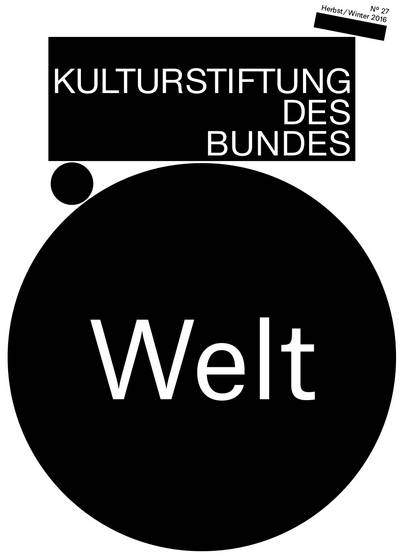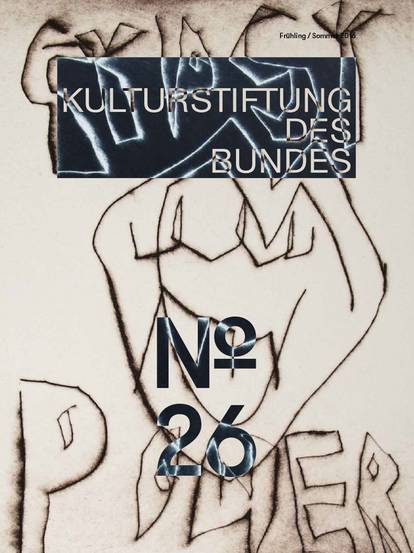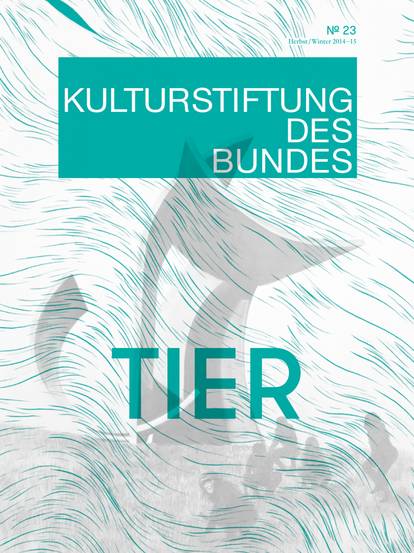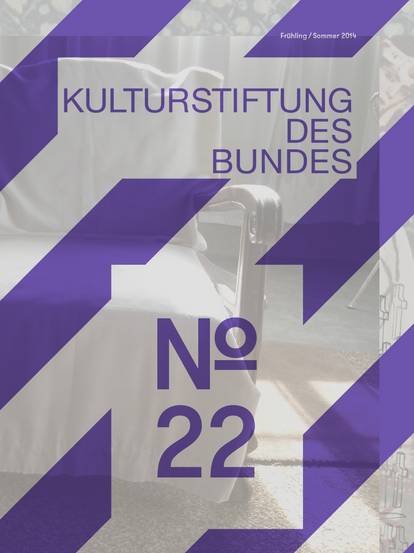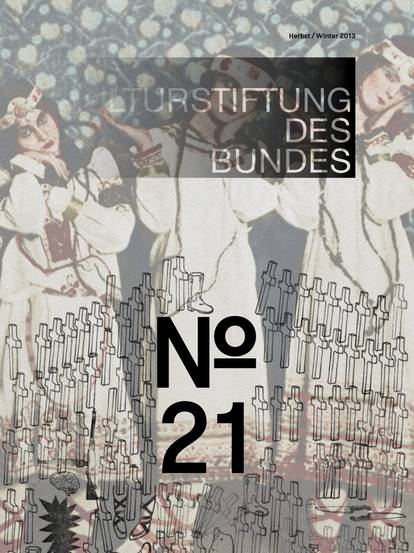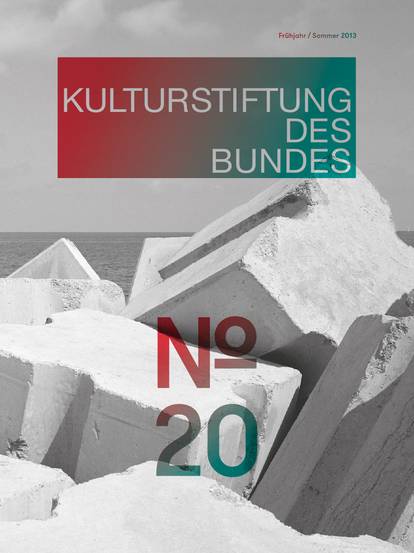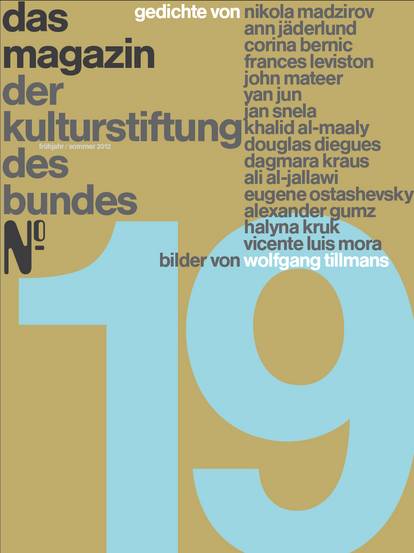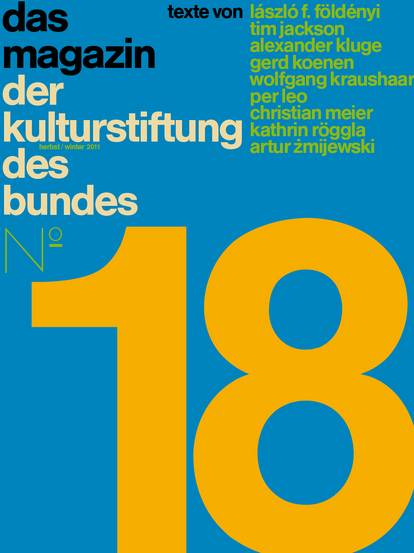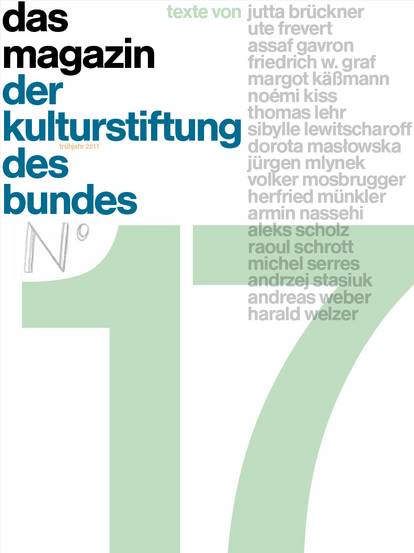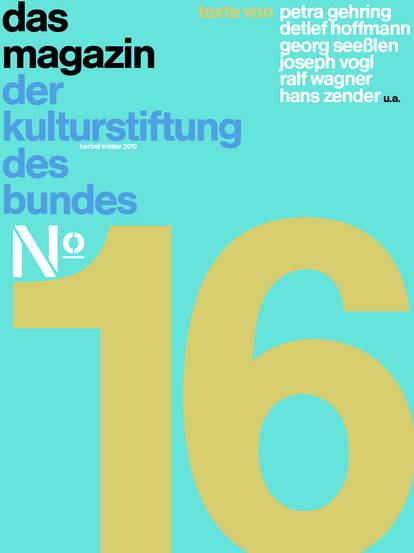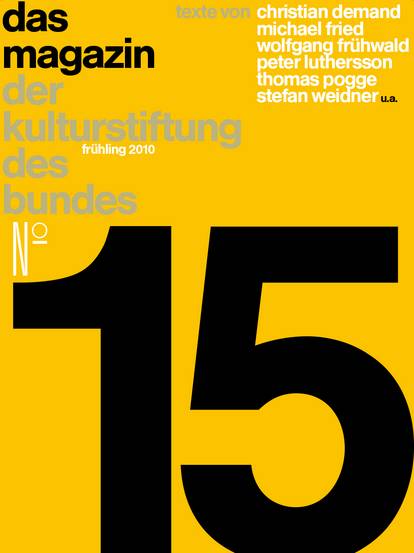In this issue of our Magazine, we present a number of projects which address the themes of nature and animals. No, the Foundation is not about to establish a special funding programme dedicated to nature, but the relationship between nature and art, and especially animalistic nature and art, seems to have sparked renewed interest everywhere. Not only have we noticed this in the project applications we receive. Perhaps this new interest in nature is due to the fact that our vigilance and sense of responsibility toward our environment has increased and global interweave has become more prevalent. The disappearance of honey bees, for example, is not a regionally limited, ecological footnote, but a sign of change, the extent of which we can hardly estimate. What we do know is that human beings are the ones who are shaping nature. Therefore, it comes as no surprise that our relationship to nature is being expressed in culture and art and is forging links to new areas. The old distinction, the strict contrast between nature and art has become obsolete. This causes Srećko Horvat to ask whether we should truly be surprised at the genocide of animals, “when human beings are still incapable of treating other humans humanely.” As a Marxist philosopher, Horvat has no intention of putting ethics above eating, but he does argue that our manner of interaction with one another determines how we treat animals.
The legal expert Anne Peters points out that it wasn’t so long ago when we put non-Europeans on display in zoos. This practice would be unimaginable in Europe today because our attitudes toward human dignity have evolved. Could it be that in several decades we will think the same of the animals on display in zoos and the stuffed animals in natural history museums? Will we make progress in safeguarding the animals’ rights to liberty and dignity? According to the Peters, a divide separates human rights and animal rights, a divide which makes a mockery of the biological continuum between humans and animals and their common traits. Cord Riechelmann also makes an appeal for an alternative view of the animal world. Artists must be aware that they can and should create a door to the cosmos of the living, as advocated by the industrialised Life Sciences, especially as they increasingly influence our view of nature.
The American artist Mark Dion has examined the collection and exhibition practices of natural objects for many years now. He attempts to counter the “suicidal relationship with our planet” and reflects on the role of artistic interventions in natural-historical situations.
For centuries, nature has been a source of inspiration almost like no other in the world of music. The instrumentalist Jeremias Schwarzer and concert designer Folkert Uhde discuss the naive belief that nature can be imitated through music. On the basis of various compositions – from Vivaldi to today’s electronic music – we can trace how humans, as the composers of their times, have expressed their specific relationship to nature. But in order to perceive it, we require new forms of reception.
And finally, we asked Scottish writer John Burnside, who is also well-known in Germany, for recommendations on dealing with nature in a human-friendly way. According to Burnside, we must approach nature both “rigorously and generously” to an equal extent. “In the course of history,” he says, “our regard for ‘nature’ has never been very deep or long-lived, while our capacity for sentimentalising ourselves, even as we have cheerfully decimated so many of our fellows, has never dimmed.” We also present two new poems by the American poet Allison Funk, translated into German for the first time, which highlight our relationship to nature in a in an original, poetic manner. The illustrations by Laetitia Gendre featured in this issue also offer a very unconventional angle to this theme: organic and natural forms are counterpoised by scientific representations, the micro- and macro-cosmos interweave with one another.

![[Translate to English:] Magazine 38](/fileadmin/_processed_/f/1/csm_Magazin38_Cover-Vorschau_921x1230_689f428dc3.jpg)
![[Translate to English:] Magazine 37](/fileadmin/_processed_/b/c/csm_Mag37_Cover-Vorschau_921x1230_b5129fdb2a.jpg)
![[Translate to English:] Magazine 36](/fileadmin/_processed_/2/a/csm_Cover_Magazin36__issuu_2f3cef97bb.jpg)

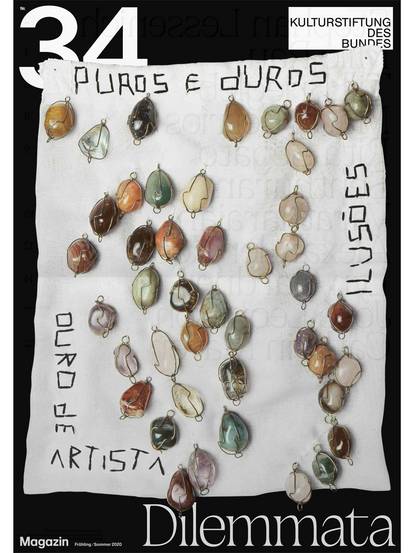
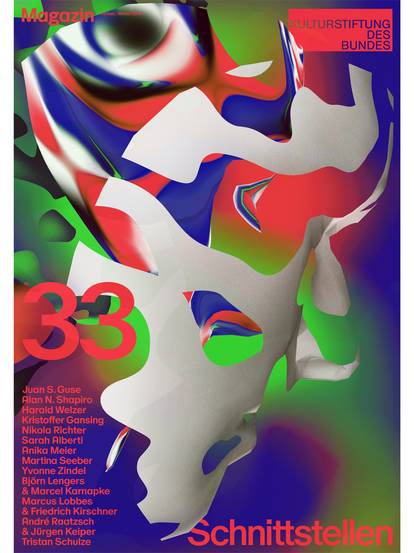
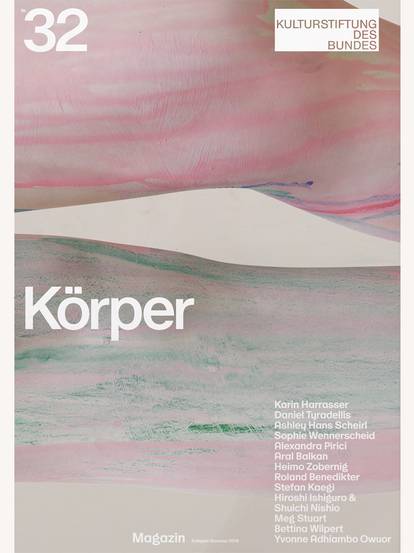
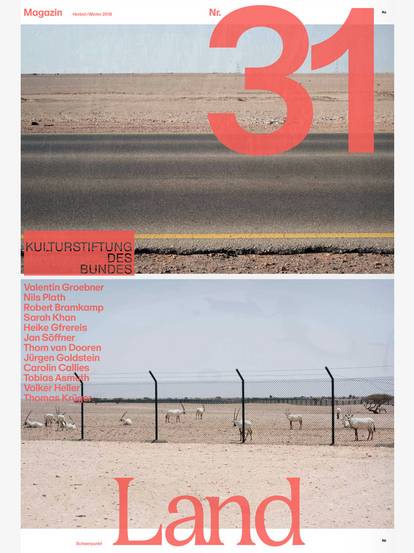
![[Translate to English:] Magazine 30](/fileadmin/_processed_/c/b/csm_magazin30_vorschau_9005f773d3.jpg)


